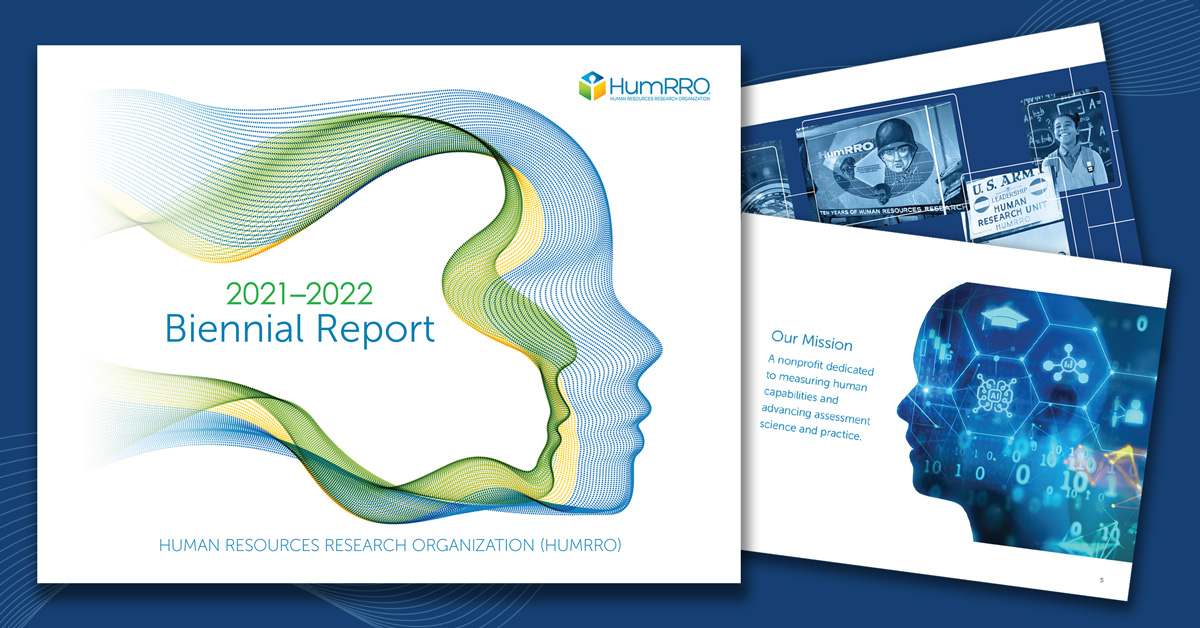[fusion_builder_container hundred_percent=”no” hundred_percent_height=”no” hundred_percent_height_scroll=”no” hundred_percent_height_center_content=”yes” equal_height_columns=”no” hide_on_mobile=”small-visibility,medium-visibility,large-visibility” status=”published” background_position=”center center” background_repeat=”no-repeat” fade=”no” background_parallax=”none” enable_mobile=”no” parallax_speed=”0.3″ video_aspect_ratio=”16:9″ video_loop=”yes” video_mute=”yes” border_style=”solid” type=”legacy”][fusion_builder_row][fusion_builder_column type=”1_1″ type=”1_1″ layout=”1_1″ center_content=”no” target=”_self” hide_on_mobile=”small-visibility,medium-visibility,large-visibility” background_position=”left top” background_repeat=”no-repeat” hover_type=”none” border_style=”solid” border_position=”all” animation_direction=”left” animation_speed=”0.3″ last=”true” border_sizes_top=”0″ border_sizes_bottom=”0″ border_sizes_left=”0″ border_sizes_right=”0″ first=”true” background_blend_mode=”overlay” min_height=”” link=””][fusion_text hide_on_mobile=”small-visibility,medium-visibility,large-visibility” sticky_display=”normal,sticky” animation_direction=”left” animation_speed=”0.3″]
In recent years, three words have been enthusiastically embraced by the talent management community: Skills-based hiring. The term generally refers to removing educational degree requirements from the hiring process while shifting the focus to skills. This sounds simple, but discussions of skills-based hiring often generate more questions than answers, including:
- What’s driving the focus on skills?
- How are skills defined?
- What could be lost by dropping degree requirements?
- What is the best way to assess the skills reflected in a college degree?
Introductions to the skills-based hiring perspective often generate the reaction, “That sounds great in theory, but how do I actually do it in practice?” To answer that question, we first examine some of the legal and cultural forces that gave rise to the skills-based hiring movement and then address the three other questions shared above.
[/fusion_text][/fusion_builder_column][/fusion_builder_row][/fusion_builder_container][fusion_builder_container hundred_percent=”no” hundred_percent_height=”no” hundred_percent_height_scroll=”no” hundred_percent_height_center_content=”yes” equal_height_columns=”no” hide_on_mobile=”small-visibility,medium-visibility,large-visibility” status=”published” background_position=”center center” background_repeat=”no-repeat” fade=”no” background_parallax=”none” enable_mobile=”no” parallax_speed=”0.3″ video_aspect_ratio=”16:9″ video_loop=”yes” video_mute=”yes” border_style=”solid” type=”legacy”][fusion_builder_row][fusion_builder_column type=”1_1″ type=”1_1″ layout=”1_1″ center_content=”no” target=”_self” hide_on_mobile=”small-visibility,medium-visibility,large-visibility” background_position=”left top” background_repeat=”no-repeat” hover_type=”none” border_style=”solid” border_position=”all” animation_direction=”left” animation_speed=”0.3″ last=”true” border_sizes_top=”0″ border_sizes_bottom=”0″ border_sizes_left=”0″ border_sizes_right=”0″ first=”true” background_blend_mode=”overlay” min_height=”” link=””][fusion_separator style_type=”shadow” hide_on_mobile=”small-visibility,medium-visibility,large-visibility” bottom_margin=”45px” alignment=”center” /][fusion_title title_type=”text” rotation_effect=”bounceIn” display_time=”1200″ highlight_effect=”circle” loop_animation=”off” highlight_width=”9″ highlight_top_margin=”0″ title_link=”off” link_target=”_self” hide_on_mobile=”small-visibility,medium-visibility,large-visibility” sticky_display=”normal,sticky” content_align=”center” size=”2″ text_color=”#009cd7″ text_shadow=”no” text_shadow_blur=”0″ gradient_font=”no” gradient_start_position=”0″ gradient_end_position=”100″ gradient_type=”linear” radial_direction=”center center” linear_angle=”180″ style_type=”none” animation_direction=”left” animation_speed=”0.3″]
Roots of the Skills-Based Hiring Movement
[/fusion_title][/fusion_builder_column][fusion_builder_column type=”1_1″ type=”1_1″ layout=”1_1″ center_content=”no” target=”_self” hide_on_mobile=”small-visibility,medium-visibility,large-visibility” hover_type=”none” border_style=”solid” border_position=”all” box_shadow=”no” box_shadow_blur=”0″ box_shadow_spread=”0″ background_type=”single” gradient_start_position=”0″ gradient_end_position=”100″ gradient_type=”linear” radial_direction=”center center” linear_angle=”180″ background_position=”left top” background_repeat=”no-repeat” background_blend_mode=”none” animation_direction=”left” animation_speed=”0.3″ filter_type=”regular” filter_hue=”0″ filter_saturation=”100″ filter_brightness=”100″ filter_contrast=”100″ filter_invert=”0″ filter_sepia=”0″ filter_opacity=”100″ filter_blur=”0″ filter_hue_hover=”0″ filter_saturation_hover=”100″ filter_brightness_hover=”100″ filter_contrast_hover=”100″ filter_invert_hover=”0″ filter_sepia_hover=”0″ filter_opacity_hover=”100″ filter_blur_hover=”0″ last=”true” border_sizes_top=”0″ border_sizes_bottom=”0″ border_sizes_left=”0″ border_sizes_right=”0″ first=”true” min_height=”” link=””][fusion_text hide_on_mobile=”small-visibility,medium-visibility,large-visibility” sticky_display=”normal,sticky” animation_direction=”left” animation_speed=”0.3″]
The current push toward skills-based hiring in the federal sector came three years ago through Executive Order (EO) 13932, Modernizing and Reforming the Assessment and Hiring of Federal Job Candidates. The EO’s language captures the spirit of skills-based hiring well by noting that “an overreliance on college degrees excludes capable candidates and undermines labor-market efficiencies.”
Similar trends have been observed at the state level, where governors from Virginia and Colorado recently joined those from eight other states in either removing or drastically reducing degree requirements from many state jobs. In the private sector, companies including Google, IBM, and Walmart have shifted away from a reliance on degrees and toward skills-based hiring. LinkedIn job posting data recently revealed that the percentage of job postings requiring a four-year degree fell from 20% in 2021 to 15% in 2022. This wasn’t a one-time aberration. Data analyzed by the Burning Glass Institute found that from 2017-2021, the share of online job posts requiring a degree dropped from 51% to 44%.
If both current best practices and research evidence seem to support a shift away from degrees toward skills during the hiring process, one critical question still seems unanswered: What exactly is a skill?
[/fusion_text][/fusion_builder_column][/fusion_builder_row][/fusion_builder_container][fusion_builder_container hundred_percent=”no” hundred_percent_height=”no” hundred_percent_height_scroll=”no” hundred_percent_height_center_content=”yes” equal_height_columns=”no” hide_on_mobile=”small-visibility,medium-visibility,large-visibility” status=”published” background_position=”center center” background_repeat=”no-repeat” fade=”no” background_parallax=”none” enable_mobile=”no” parallax_speed=”0.3″ video_aspect_ratio=”16:9″ video_loop=”yes” video_mute=”yes” border_style=”solid” type=”legacy”][fusion_builder_row][fusion_builder_column type=”1_1″ type=”1_1″ layout=”1_1″ center_content=”no” target=”_self” hide_on_mobile=”small-visibility,medium-visibility,large-visibility” background_position=”left top” background_repeat=”no-repeat” hover_type=”none” border_style=”solid” border_position=”all” animation_direction=”left” animation_speed=”0.3″ last=”true” border_sizes_top=”0″ border_sizes_bottom=”0″ border_sizes_left=”0″ border_sizes_right=”0″ first=”true” background_blend_mode=”overlay” min_height=”” link=””][fusion_separator style_type=”shadow” hide_on_mobile=”small-visibility,medium-visibility,large-visibility” bottom_margin=”45px” alignment=”center” /][fusion_title title_type=”text” rotation_effect=”bounceIn” display_time=”1200″ highlight_effect=”circle” loop_animation=”off” highlight_width=”9″ highlight_top_margin=”0″ title_link=”off” link_target=”_self” hide_on_mobile=”small-visibility,medium-visibility,large-visibility” sticky_display=”normal,sticky” content_align=”center” size=”2″ text_color=”#009cd7″ text_shadow=”no” text_shadow_blur=”0″ gradient_font=”no” gradient_start_position=”0″ gradient_end_position=”100″ gradient_type=”linear” radial_direction=”center center” linear_angle=”180″ style_type=”none” animation_direction=”left” animation_speed=”0.3″]
What are Skills, Anyway?
[/fusion_title][/fusion_builder_column][fusion_builder_column type=”1_1″ type=”1_1″ layout=”1_1″ center_content=”no” target=”_self” hide_on_mobile=”small-visibility,medium-visibility,large-visibility” hover_type=”none” border_style=”solid” border_position=”all” box_shadow=”no” box_shadow_blur=”0″ box_shadow_spread=”0″ background_type=”single” gradient_start_position=”0″ gradient_end_position=”100″ gradient_type=”linear” radial_direction=”center center” linear_angle=”180″ background_position=”left top” background_repeat=”no-repeat” background_blend_mode=”none” animation_direction=”left” animation_speed=”0.3″ filter_type=”regular” filter_hue=”0″ filter_saturation=”100″ filter_brightness=”100″ filter_contrast=”100″ filter_invert=”0″ filter_sepia=”0″ filter_opacity=”100″ filter_blur=”0″ filter_hue_hover=”0″ filter_saturation_hover=”100″ filter_brightness_hover=”100″ filter_contrast_hover=”100″ filter_invert_hover=”0″ filter_sepia_hover=”0″ filter_opacity_hover=”100″ filter_blur_hover=”0″ last=”true” border_sizes_top=”0″ border_sizes_bottom=”0″ border_sizes_left=”0″ border_sizes_right=”0″ first=”true” min_height=”” link=””][fusion_text hide_on_mobile=”small-visibility,medium-visibility,large-visibility” sticky_display=”normal,sticky” animation_direction=”left” animation_speed=”0.3″]
When referencing “skills,” people either define the term so broadly that it loses any real meaning or don’t attempt to precisely define it at all. Industrial-organizational (I-O) psychologists and other HR professionals often characterize skills under the umbrella acronym, “KSA,” which stands for knowledge, skills, and abilities, and represents the full constellation of personal capabilities needed to perform a job. Here, “knowledge” is typically defined as understanding a fact-based body of information, and “abilities” are conceptualized as relatively stable, innate qualities, such as intelligence and personality traits. In the KSA context, “skills” are defined much more narrowly, such as involving the use of tools, such as Power BI or Microsoft Excel, or capabilities that result from specific training, such as coding and prompt engineering. What people often attribute to “skills”—such as teamwork, interpersonal aptitude, conflict management, and self-control—would be considered abilities in the traditional KSA framework.
With this expanded definition of skills in mind, we now turn to a question that is often overlooked in discussion of skills-based hiring: When degree requirements are dropped, what information about a job candidate is potentially lost?
[/fusion_text][/fusion_builder_column][/fusion_builder_row][/fusion_builder_container][fusion_builder_container hundred_percent=”no” hundred_percent_height=”no” hundred_percent_height_scroll=”no” hundred_percent_height_center_content=”yes” equal_height_columns=”no” hide_on_mobile=”small-visibility,medium-visibility,large-visibility” status=”published” background_position=”center center” background_repeat=”no-repeat” fade=”no” background_parallax=”none” enable_mobile=”no” parallax_speed=”0.3″ video_aspect_ratio=”16:9″ video_loop=”yes” video_mute=”yes” border_style=”solid” type=”legacy”][fusion_builder_row][fusion_builder_column type=”1_1″ type=”1_1″ layout=”1_1″ center_content=”no” target=”_self” hide_on_mobile=”small-visibility,medium-visibility,large-visibility” background_position=”left top” background_repeat=”no-repeat” hover_type=”none” border_style=”solid” border_position=”all” animation_direction=”left” animation_speed=”0.3″ last=”true” border_sizes_top=”0″ border_sizes_bottom=”0″ border_sizes_left=”0″ border_sizes_right=”0″ first=”true” background_blend_mode=”overlay” min_height=”” link=””][fusion_separator style_type=”shadow” hide_on_mobile=”small-visibility,medium-visibility,large-visibility” bottom_margin=”45px” alignment=”center” /][fusion_title title_type=”text” rotation_effect=”bounceIn” display_time=”1200″ highlight_effect=”circle” loop_animation=”off” highlight_width=”9″ highlight_top_margin=”0″ title_link=”off” link_target=”_self” hide_on_mobile=”small-visibility,medium-visibility,large-visibility” sticky_display=”normal,sticky” content_align=”center” size=”2″ text_color=”#009cd7″ text_shadow=”no” text_shadow_blur=”0″ gradient_font=”no” gradient_start_position=”0″ gradient_end_position=”100″ gradient_type=”linear” radial_direction=”center center” linear_angle=”180″ style_type=”none” animation_direction=”left” animation_speed=”0.3″]
The Bachelor’s Degree: Soft Skills by Proxy
[/fusion_title][/fusion_builder_column][fusion_builder_column type=”1_1″ type=”1_1″ layout=”1_1″ center_content=”no” target=”_self” hide_on_mobile=”small-visibility,medium-visibility,large-visibility” hover_type=”none” border_style=”solid” border_position=”all” box_shadow=”no” box_shadow_blur=”0″ box_shadow_spread=”0″ background_type=”single” gradient_start_position=”0″ gradient_end_position=”100″ gradient_type=”linear” radial_direction=”center center” linear_angle=”180″ background_position=”left top” background_repeat=”no-repeat” background_blend_mode=”none” animation_direction=”left” animation_speed=”0.3″ filter_type=”regular” filter_hue=”0″ filter_saturation=”100″ filter_brightness=”100″ filter_contrast=”100″ filter_invert=”0″ filter_sepia=”0″ filter_opacity=”100″ filter_blur=”0″ filter_hue_hover=”0″ filter_saturation_hover=”100″ filter_brightness_hover=”100″ filter_contrast_hover=”100″ filter_invert_hover=”0″ filter_sepia_hover=”0″ filter_opacity_hover=”100″ filter_blur_hover=”0″ last=”true” border_sizes_top=”0″ border_sizes_bottom=”0″ border_sizes_left=”0″ border_sizes_right=”0″ first=”true” min_height=”” link=””][fusion_text hide_on_mobile=”small-visibility,medium-visibility,large-visibility” sticky_display=”normal,sticky” animation_direction=”left” animation_speed=”0.3″]
Across the great diversity of majors and fields of study, it is useful to consider what skills a college degree confers. In other words, regardless of whether one’s major is aerospace engineering, English literature, music, or psychology, what do graduates leave the college experience able to do? In an insightful Harvard Business Review article, Joseph Fuller, Christina Langer, and Matt Sigelman argue that above all else, employers use college degrees as a proxy for soft skills such as teamwork, prioritization, relating to others, managing conflict, and navigating social situations. Supporting this assertion, the HBR researchers found that when employers dropped degree requirements, they frequently added more detailed requirements focused on soft skills to their job postings. Beyond soft skills, we would argue that possession of a college degree could also reflect a host of additional skills including motivation, learning orientation, resilience, and adaptability.
Of course, the argument that a college degree can faithfully serve as a proxy for the myriad skills noted above has clear weaknesses. At the same time, the perspective that the college experience does not enhance such skills is equally tenuous. So, all things being equal, it is reasonable to suggest that if a college degree requirement is dropped from the hiring process, it would be wise to consider how to measure some of the key skills employers hope are conferred through the college experience during the assessment process.
[/fusion_text][/fusion_builder_column][/fusion_builder_row][/fusion_builder_container][fusion_builder_container hundred_percent=”no” hundred_percent_height=”no” hundred_percent_height_scroll=”no” hundred_percent_height_center_content=”yes” equal_height_columns=”no” hide_on_mobile=”small-visibility,medium-visibility,large-visibility” status=”published” background_image=”https://www.humrro.org/dev/corpsite_wp/wp-content/uploads/2019/02/humrro-cubes-pattern-lightest.png” background_position=”center center” background_repeat=”repeat” fade=”no” background_parallax=”up” enable_mobile=”no” parallax_speed=”0.3″ video_aspect_ratio=”16:9″ video_loop=”yes” video_mute=”yes” border_style=”solid” margin_bottom=”40px” type=”legacy”][fusion_builder_row][fusion_builder_column type=”1_1″ type=”1_1″ layout=”1_1″ center_content=”no” target=”_self” hide_on_mobile=”small-visibility,medium-visibility,large-visibility” background_position=”left top” background_repeat=”repeat” hover_type=”none” border_style=”solid” border_position=”all” padding_top=”40px” padding_right=”40px” padding_bottom=”20px” padding_left=”40px” animation_direction=”left” animation_speed=”0.3″ last=”true” border_sizes_top=”0″ border_sizes_bottom=”0″ border_sizes_left=”0″ border_sizes_right=”0″ first=”true” background_blend_mode=”overlay” min_height=”” link=””][fusion_text hide_on_mobile=”small-visibility,medium-visibility,large-visibility” sticky_display=”normal,sticky” animation_direction=”left” animation_speed=”0.3″]
The challenge, as any assessment professional knows, is that the very same skills employers look for in college graduates are precisely the ones that can be the hardest to measure.
[/fusion_text][/fusion_builder_column][/fusion_builder_row][/fusion_builder_container][fusion_builder_container type=”flex” hundred_percent=”no” hundred_percent_height=”no” hundred_percent_height_scroll=”no” align_content=”stretch” flex_align_items=”flex-start” flex_justify_content=”flex-start” hundred_percent_height_center_content=”yes” equal_height_columns=”no” container_tag=”div” hide_on_mobile=”small-visibility,medium-visibility,large-visibility” status=”published” border_style=”solid” box_shadow=”no” box_shadow_blur=”0″ box_shadow_spread=”0″ gradient_start_position=”0″ gradient_end_position=”100″ gradient_type=”linear” radial_direction=”center center” linear_angle=”180″ background_position=”center center” background_repeat=”no-repeat” fade=”no” background_parallax=”none” enable_mobile=”no” parallax_speed=”0.3″ background_blend_mode=”none” video_aspect_ratio=”16:9″ video_loop=”yes” video_mute=”yes” pattern_bg=”none” pattern_bg_style=”default” pattern_bg_opacity=”100″ pattern_bg_blend_mode=”normal” mask_bg=”none” mask_bg_style=”default” mask_bg_opacity=”100″ mask_bg_transform=”left” mask_bg_blend_mode=”normal” absolute=”off” absolute_devices=”small,medium,large” sticky=”off” sticky_devices=”small-visibility,medium-visibility,large-visibility” sticky_transition_offset=”0″ scroll_offset=”0″ animation_direction=”left” animation_speed=”0.3″ filter_hue=”0″ filter_saturation=”100″ filter_brightness=”100″ filter_contrast=”100″ filter_invert=”0″ filter_sepia=”0″ filter_opacity=”100″ filter_blur=”0″ filter_hue_hover=”0″ filter_saturation_hover=”100″ filter_brightness_hover=”100″ filter_contrast_hover=”100″ filter_invert_hover=”0″ filter_sepia_hover=”0″ filter_opacity_hover=”100″ filter_blur_hover=”0″][fusion_builder_row][fusion_builder_column type=”1_1″ type=”1_1″ layout=”1_1″ align_self=”auto” content_layout=”column” align_content=”flex-start” valign_content=”flex-start” content_wrap=”wrap” center_content=”no” column_tag=”div” target=”_self” hide_on_mobile=”small-visibility,medium-visibility,large-visibility” sticky_display=”normal,sticky” order_medium=”0″ order_small=”0″ hover_type=”none” border_style=”solid” box_shadow=”no” box_shadow_blur=”0″ box_shadow_spread=”0″ z_index_subgroup=”regular” background_type=”single” gradient_start_position=”0″ gradient_end_position=”100″ gradient_type=”linear” radial_direction=”center center” linear_angle=”180″ lazy_load=”avada” background_position=”left top” background_repeat=”no-repeat” background_blend_mode=”none” sticky=”off” sticky_devices=”small-visibility,medium-visibility,large-visibility” filter_type=”regular” filter_hue=”0″ filter_saturation=”100″ filter_brightness=”100″ filter_contrast=”100″ filter_invert=”0″ filter_sepia=”0″ filter_opacity=”100″ filter_blur=”0″ filter_hue_hover=”0″ filter_saturation_hover=”100″ filter_brightness_hover=”100″ filter_contrast_hover=”100″ filter_invert_hover=”0″ filter_sepia_hover=”0″ filter_opacity_hover=”100″ filter_blur_hover=”0″ transform_type=”regular” transform_scale_x=”1″ transform_scale_y=”1″ transform_translate_x=”0″ transform_translate_y=”0″ transform_rotate=”0″ transform_skew_x=”0″ transform_skew_y=”0″ transform_scale_x_hover=”1″ transform_scale_y_hover=”1″ transform_translate_x_hover=”0″ transform_translate_y_hover=”0″ transform_rotate_hover=”0″ transform_skew_x_hover=”0″ transform_skew_y_hover=”0″ animation_direction=”left” animation_speed=”0.3″ last=”true” border_position=”all” first=”true” min_height=”” link=””][fusion_text hide_on_mobile=”small-visibility,medium-visibility,large-visibility” sticky_display=”normal,sticky” animation_direction=”left” animation_speed=”0.3″]
For one, self-report assessments of soft skills are transparently socially desirable and easy to fake—and even when people try to answer them honestly, subtle self-enhancements are probably operating (i.e., the person who honestly sees themselves as a “team player” but whose fellow team members would beg to differ). Moreover, employers also like to see how employees enact soft skills within their unique business context.
Considering all these issues, we have found that it takes careful planning when deciding to look beyond degrees during the hiring process. We have also found that scenario-based assessment is an excellent way to measure a variety of skills, especially soft skills. Below, are tips for organizations that are ready to explore options other than degree requirements but are not sure how to proceed.
[/fusion_text][/fusion_builder_column][/fusion_builder_row][/fusion_builder_container][fusion_builder_container hundred_percent=”no” hundred_percent_height=”no” hundred_percent_height_scroll=”no” hundred_percent_height_center_content=”yes” equal_height_columns=”no” hide_on_mobile=”small-visibility,medium-visibility,large-visibility” status=”published” background_position=”center center” background_repeat=”no-repeat” fade=”no” background_parallax=”none” enable_mobile=”no” parallax_speed=”0.3″ video_aspect_ratio=”16:9″ video_loop=”yes” video_mute=”yes” border_style=”solid” type=”legacy” margin_bottom=”0″][fusion_builder_row][fusion_builder_column type=”1_1″ type=”1_1″ layout=”1_1″ center_content=”no” target=”_self” hide_on_mobile=”small-visibility,medium-visibility,large-visibility” background_position=”left top” background_repeat=”no-repeat” hover_type=”none” border_style=”solid” border_position=”all” animation_direction=”left” animation_speed=”0.3″ last=”true” border_sizes_top=”0″ border_sizes_bottom=”0″ border_sizes_left=”0″ border_sizes_right=”0″ first=”true” background_blend_mode=”overlay” min_height=”” link=””][fusion_separator style_type=”shadow” hide_on_mobile=”small-visibility,medium-visibility,large-visibility” bottom_margin=”45px” alignment=”center” /][fusion_title title_type=”text” rotation_effect=”bounceIn” display_time=”1200″ highlight_effect=”circle” loop_animation=”off” highlight_width=”9″ highlight_top_margin=”0″ title_link=”off” link_target=”_self” hide_on_mobile=”small-visibility,medium-visibility,large-visibility” sticky_display=”normal,sticky” content_align=”center” size=”2″ text_color=”#009cd7″ text_shadow=”no” text_shadow_blur=”0″ gradient_font=”no” gradient_start_position=”0″ gradient_end_position=”100″ gradient_type=”linear” radial_direction=”center center” linear_angle=”180″ style_type=”none” animation_direction=”left” animation_speed=”0.3″]
So, You Want to Drop the Degree Requirement: What’s Next?
[/fusion_title][/fusion_builder_column][fusion_builder_column type=”1_1″ type=”1_1″ layout=”1_1″ center_content=”no” target=”_self” hide_on_mobile=”small-visibility,medium-visibility,large-visibility” hover_type=”none” border_style=”solid” border_position=”all” box_shadow=”no” box_shadow_blur=”0″ box_shadow_spread=”0″ background_type=”single” gradient_start_position=”0″ gradient_end_position=”100″ gradient_type=”linear” radial_direction=”center center” linear_angle=”180″ background_position=”left top” background_repeat=”no-repeat” background_blend_mode=”none” animation_direction=”left” animation_speed=”0.3″ filter_type=”regular” filter_hue=”0″ filter_saturation=”100″ filter_brightness=”100″ filter_contrast=”100″ filter_invert=”0″ filter_sepia=”0″ filter_opacity=”100″ filter_blur=”0″ filter_hue_hover=”0″ filter_saturation_hover=”100″ filter_brightness_hover=”100″ filter_contrast_hover=”100″ filter_invert_hover=”0″ filter_sepia_hover=”0″ filter_opacity_hover=”100″ filter_blur_hover=”0″ last=”true” border_sizes_top=”0″ border_sizes_bottom=”0″ border_sizes_left=”0″ border_sizes_right=”0″ first=”true” min_height=”” link=””][fusion_text hide_on_mobile=”small-visibility,medium-visibility,large-visibility” sticky_display=”normal,sticky” animation_direction=”left” animation_speed=”0.3″]
In a broad sense, the path toward an optimal skills-based assessment solution covers five broad domains: mapping a job’s key requirements, determining the optimal assessment strategy, making a “build or buy” decision, implementing the solution, and conducting an ongoing, rigorous evaluation of the entire assessment process:
[/fusion_text][fusion_content_boxes layout=”icon-on-side” columns=”1″ icon_align=”left” animation_direction=”left” animation_speed=”0.3″ hide_on_mobile=”small-visibility,medium-visibility,large-visibility” heading_size=”2″ iconspin=”no” circlecolor=”var(–awb-color5)” circlebordercolor=”var(–awb-color5)” margin_bottom=”-45px” margin_top=”45px”][fusion_content_box title=”1. Mapping a Job’s Skill Requirements. ” icon=”fa-map fas” linktext=”Read More” animation_direction=”left” animation_speed=”0.3″]
The first thing HR practitioners picture when they hear the phrase “job analysis” are dollar signs. The truth, though, is that a comprehensive analysis including job observations, interviews, focus groups, and surveys, is not always needed. Understanding a job’s skill requirements may only require several focus groups and a targeted survey. Beyond the solid legal foundation a job analysis provides, we have seen too many cases where organizations jump into selecting an assessment solution without a clear understanding of the job’s skill requirements—so the time and funds spent on even a targeted job analysis are well worth it.
[/fusion_content_box][fusion_content_box title=”2. Developing an Optimal Skill Assessment Strategy. ” icon=”fa-chess fas” linktext=”Read More” animation_direction=”left” animation_speed=”0.3″]
Once a job’s key skills have been identified, the next step involves deciding how to assess them. In our experience, especially when soft or “core” skills such as interpersonal skills, teamwork, conflict management, decision making, and planning and prioritization are involved, scenario-based assessment is an excellent option. Situational judgment tests (SJTs) are perhaps the most widely used, scalable, and well-researched type of scenario-based assessment, where candidates are presented with a job relevant scenario and asked to respond in a variety of different ways, such as pick best/worst, rate the effectiveness of each option, or select what they would do. Key strengths of SJTs include their ability to assess skills within a job relevant context and to measure skills in tandem with knowledge and abilities, all while evidencing consistent validities, relatively small subgroup differences, and generally favorable candidate reactions. SJTs we’ve developed are used in many high stakes hiring and credentialing programs, including for the International Coaching Federation, the Society for Human Resource Management, and the U.S. Department of State. For those looking for an even more immersive and engaging assessment experience, rich-media simulations are an excellent option.
[/fusion_content_box][fusion_content_box title=”3. Making the “Build or Buy” Decision. ” icon=”fa-question fas” linktext=”Read More” animation_direction=”left” animation_speed=”0.3″]
Deciding whether to buy an off-the-shelf (OTS) assessment solution or build a custom one can be a difficult decision. HR professionals often assume the “buy” path will be cheaper, but the per-candidate fees associated with many OTS assessments can be substantial. The process of identifying and evaluating the large number of available OTS tools can also feel overwhelming. Many of our clients have found the benefits associated with developing a custom assessment that targets the unique skill mix, context, and culture of their organization to be compelling. But for those looking for an OTS solution, we have served as a trusted advisor, helping clients identify and evaluate the myriad OTS tools on the market. For example, we helped Southern California Edison identify, validate, and implement an optimal personality-based OTS leadership assessment.
[/fusion_content_box][fusion_content_box title=”4. Implementing the Assessment Solution. ” icon=”fa-clipboard-check fas” linktext=”Read More” animation_direction=”left” animation_speed=”0.3″]
Once an optimal assessment path is mapped, organizations are sometimes surprised to learn how many decisions remain before the solution can be successfully implemented, including how to set a passing score, construct forms, and administer the assessment—for example, in-person versus remote proctoring. Some of our recent implementation-focused assessment consulting has involved evaluating the steps needed for an organization to move from static form assembly toward more dynamic approaches, including computer-administered testing (CAT).
[/fusion_content_box][fusion_content_box title=”5. Evaluating the Assessment Process. ” icon=”fa-clipboard-list fas” linktext=”Read More” animation_direction=”left” animation_speed=”0.3″]
In our experience, continuous evaluation is one of the most overlooked elements of an optimal assessment process, yet it can truly help a program go from “good to great.” Relevant evaluation questions include:
- Is the assessment maintaining its validity over time?
- How are candidates reacting to the assessment?
- How well is the cut score working? (For example, are the numbers of false positives and false negatives minimized?)
- Is the job changing in ways that impact the ideal assessment solution?
[/fusion_content_box][/fusion_content_boxes][fusion_text hide_on_mobile=”small-visibility,medium-visibility,large-visibility” sticky_display=”normal,sticky” animation_direction=”left” animation_speed=”0.3″]
By following these steps, organizations foster fairness, equity, and inclusion through rigorous skill assessment during the hiring process. We would argue, though, that the spirit animating initiatives like EO 13932 and similar efforts in the private sector is much broader than hiring and includes removing any barriers to merit-based employment, regardless of where they appear in the employment life cycle. Indeed, for the skills-based hiring movement to advance its full potential, the focus must expand beyond hiring.
[/fusion_text][/fusion_builder_column][/fusion_builder_row][/fusion_builder_container][fusion_builder_container hundred_percent=”no” hundred_percent_height=”no” hundred_percent_height_scroll=”no” hundred_percent_height_center_content=”yes” equal_height_columns=”no” hide_on_mobile=”small-visibility,medium-visibility,large-visibility” status=”published” background_position=”center center” background_repeat=”no-repeat” fade=”no” background_parallax=”none” enable_mobile=”no” parallax_speed=”0.3″ video_aspect_ratio=”16:9″ video_loop=”yes” video_mute=”yes” border_style=”solid” type=”legacy”][fusion_builder_row][fusion_builder_column type=”1_1″ type=”1_1″ layout=”1_1″ center_content=”no” target=”_self” hide_on_mobile=”small-visibility,medium-visibility,large-visibility” background_position=”left top” background_repeat=”no-repeat” hover_type=”none” border_style=”solid” border_position=”all” animation_direction=”left” animation_speed=”0.3″ last=”true” border_sizes_top=”0″ border_sizes_bottom=”0″ border_sizes_left=”0″ border_sizes_right=”0″ first=”true” background_blend_mode=”overlay” min_height=”” link=””][fusion_separator style_type=”shadow” hide_on_mobile=”small-visibility,medium-visibility,large-visibility” bottom_margin=”45px” alignment=”center” /][fusion_title title_type=”text” rotation_effect=”bounceIn” display_time=”1200″ highlight_effect=”circle” loop_animation=”off” highlight_width=”9″ highlight_top_margin=”0″ title_link=”off” link_target=”_self” hide_on_mobile=”small-visibility,medium-visibility,large-visibility” sticky_display=”normal,sticky” content_align=”center” size=”2″ text_color=”#009cd7″ text_shadow=”no” text_shadow_blur=”0″ gradient_font=”no” gradient_start_position=”0″ gradient_end_position=”100″ gradient_type=”linear” radial_direction=”center center” linear_angle=”180″ style_type=”none” animation_direction=”left” animation_speed=”0.3″]
Expanding the Skills Movement Beyond Hiring
[/fusion_title][/fusion_builder_column][fusion_builder_column type=”1_1″ type=”1_1″ layout=”1_1″ center_content=”no” target=”_self” hide_on_mobile=”small-visibility,medium-visibility,large-visibility” hover_type=”none” border_style=”solid” border_position=”all” box_shadow=”no” box_shadow_blur=”0″ box_shadow_spread=”0″ background_type=”single” gradient_start_position=”0″ gradient_end_position=”100″ gradient_type=”linear” radial_direction=”center center” linear_angle=”180″ background_position=”left top” background_repeat=”no-repeat” background_blend_mode=”none” animation_direction=”left” animation_speed=”0.3″ filter_type=”regular” filter_hue=”0″ filter_saturation=”100″ filter_brightness=”100″ filter_contrast=”100″ filter_invert=”0″ filter_sepia=”0″ filter_opacity=”100″ filter_blur=”0″ filter_hue_hover=”0″ filter_saturation_hover=”100″ filter_brightness_hover=”100″ filter_contrast_hover=”100″ filter_invert_hover=”0″ filter_sepia_hover=”0″ filter_opacity_hover=”100″ filter_blur_hover=”0″ last=”true” border_sizes_top=”0″ border_sizes_bottom=”0″ border_sizes_left=”0″ border_sizes_right=”0″ first=”true” min_height=”” link=””][fusion_text hide_on_mobile=”small-visibility,medium-visibility,large-visibility” sticky_display=”normal,sticky” animation_direction=”left” animation_speed=”0.3″]
While thoughtful treatment of this expanded focus would require a separate blog, we offer a few closing thoughts about how organizations might start putting it into practice. Proactive efforts at the recruitment phase, particularly by creatively sourcing potential candidates through many diverse outlets, are essential.
Beyond recruitment, organizations could even strive to “grow their own” by funding learning and development programs that directly target the skills they are seeking among applicants. In the Louisville, Kentucky area, two examples of such programs are KentuckianaWorks, which focuses on enhancing a variety of technical skills including coding, and the Leadership Louisville Center, which offers several experience-based, immersive programs designed to enhance leadership, teamwork, networking, and presentation skills.
By supporting such programs, and even helping design and launch them, organizations do more than grow the number of skilled workers among their applicant pool—they also help their communities grow as well.
[/fusion_text][/fusion_builder_column][/fusion_builder_row][/fusion_builder_container][fusion_builder_container type=”legacy” hundred_percent=”no” hundred_percent_height=”no” hundred_percent_height_scroll=”no” align_content=”stretch” flex_align_items=”flex-start” flex_justify_content=”flex-start” hundred_percent_height_center_content=”yes” equal_height_columns=”no” container_tag=”div” hide_on_mobile=”small-visibility,medium-visibility,large-visibility” status=”published” class=”border-radius-10 post-contact-card” border_sizes_top=”0px” border_sizes_right=”0px” border_sizes_bottom=”0px” border_sizes_left=”0px” border_style=”solid” margin_bottom=”65px” padding_top=”50px” padding_right=”30px” padding_bottom=”50px” padding_left=”30px” box_shadow=”no” box_shadow_blur=”0″ box_shadow_spread=”0″ gradient_start_position=”0″ gradient_end_position=”100″ gradient_type=”linear” radial_direction=”center center” linear_angle=”180″ background_color=”#003E74″ background_image=”https://www.humrro.org/corpsite/wp-content/uploads/2020/08/updated-blue-background.jpg” background_position=”center center” background_repeat=”no-repeat” fade=”no” background_parallax=”none” enable_mobile=”no” parallax_speed=”0.3″ background_blend_mode=”none” video_aspect_ratio=”16:9″ video_loop=”yes” video_mute=”yes” absolute=”off” absolute_devices=”small,medium,large” sticky=”off” sticky_devices=”small-visibility,medium-visibility,large-visibility” sticky_transition_offset=”0″ scroll_offset=”0″ animation_direction=”left” animation_speed=”0.3″ filter_hue=”0″ filter_saturation=”100″ filter_brightness=”100″ filter_contrast=”100″ filter_invert=”0″ filter_sepia=”0″ filter_opacity=”100″ filter_blur=”0″ filter_hue_hover=”0″ filter_saturation_hover=”100″ filter_brightness_hover=”100″ filter_contrast_hover=”100″ filter_invert_hover=”0″ filter_sepia_hover=”0″ filter_opacity_hover=”100″ filter_blur_hover=”0″][fusion_builder_row][fusion_builder_column type=”1_1″ type=”1_1″ layout=”1_1″ center_content=”no” target=”_self” hide_on_mobile=”small-visibility,medium-visibility,large-visibility” background_position=”left top” background_repeat=”no-repeat” hover_type=”none” border_style=”solid” border_position=”all” margin_bottom=”0″ animation_direction=”left” animation_speed=”0.3″ last=”true” border_sizes_top=”0″ border_sizes_bottom=”0″ border_sizes_left=”0″ border_sizes_right=”0″ first=”true” background_blend_mode=”overlay” min_height=”” link=””][fusion_builder_row_inner][fusion_builder_column_inner type=”1_3″ type=”1_3″ layout=”1_3″ center_content=”no” hover_type=”none” target=”_self” hide_on_mobile=”medium-visibility,large-visibility” border_style=”solid” border_position=”all” box_shadow=”no” box_shadow_blur=”0″ box_shadow_spread=”0″ margin_bottom=”0″ background_type=”single” gradient_start_position=”0″ gradient_end_position=”100″ gradient_type=”linear” radial_direction=”center center” linear_angle=”180″ background_position=”left top” background_repeat=”no-repeat” background_blend_mode=”none” animation_direction=”left” animation_speed=”0.3″ filter_type=”regular” filter_hue=”0″ filter_saturation=”100″ filter_brightness=”100″ filter_contrast=”100″ filter_invert=”0″ filter_sepia=”0″ filter_opacity=”100″ filter_blur=”0″ filter_hue_hover=”0″ filter_saturation_hover=”100″ filter_brightness_hover=”100″ filter_contrast_hover=”100″ filter_invert_hover=”0″ filter_sepia_hover=”0″ filter_opacity_hover=”100″ filter_blur_hover=”0″ last=”false” border_sizes_top=”0″ border_sizes_bottom=”0″ border_sizes_left=”0″ border_sizes_right=”0″ first=”true” min_height=”” link=””][fusion_imageframe image_id=”5559|full” custom_aspect_ratio=”100″ lightbox=”no” link=”https://www.humrro.org/corpsite/profile/gavan-oshea/” linktarget=”_self” hide_on_mobile=”small-visibility,medium-visibility,large-visibility” sticky_display=”normal,sticky” max_width=”170px” align_medium=”none” align_small=”none” align=”center” style_type=”dropshadow” hover_type=”none” borderradius=”50%” caption_style=”off” caption_align_medium=”none” caption_align_small=”none” caption_align=”none” caption_title_tag=”2″ animation_direction=”left” animation_speed=”0.3″ filter_hue=”0″ filter_saturation=”100″ filter_brightness=”100″ filter_contrast=”100″ filter_invert=”0″ filter_sepia=”0″ filter_opacity=”100″ filter_blur=”0″ filter_hue_hover=”0″ filter_saturation_hover=”100″ filter_brightness_hover=”100″ filter_contrast_hover=”100″ filter_invert_hover=”0″ filter_sepia_hover=”0″ filter_opacity_hover=”100″ filter_blur_hover=”0″]https://www.humrro.org/corpsite/wp-content/uploads/2022/02/Gavan-OShea.png[/fusion_imageframe][/fusion_builder_column_inner][fusion_builder_column_inner type=”2_3″ type=”2_3″ layout=”3_4″ center_content=”no” hover_type=”none” hide_on_mobile=”small-visibility,medium-visibility,large-visibility” background_position=”left top” background_repeat=”no-repeat” border_style=”solid” margin_bottom=”0″ animation_direction=”left” animation_speed=”0.3″ last=”true” border_position=”all” border_sizes_top=”0″ border_sizes_bottom=”0″ border_sizes_left=”0″ border_sizes_right=”0″ first=”false” background_blend_mode=”overlay” min_height=”” link=””][fusion_text hide_on_mobile=”small-visibility,medium-visibility,large-visibility” sticky_display=”normal,sticky” animation_direction=”left” animation_speed=”0.3″]
For more information, contact:
Gavan O’Shea
Manager, Business Development
[/fusion_text][fusion_button link=”https://www.humrro.org/corpsite/profile/gavan-oshea/” target=”_self” alignment=”left” hide_on_mobile=”small-visibility,medium-visibility,large-visibility” sticky_display=”normal,sticky” color=”custom” button_gradient_top_color=”#4c9c2e” button_gradient_bottom_color=”#4c9c2e” button_gradient_top_color_hover=”#96c121″ button_gradient_bottom_color_hover=”#96c121″ border_radius_top_left=”25px” border_radius_top_right=”25px” border_radius_bottom_right=”25px” border_radius_bottom_left=”25px” size=”medium” text_transform=”none” stretch=”default” icon=”fa-angle-right fas” icon_position=”right” icon_divider=”no” animation_direction=”left” animation_speed=”0.3″]Contact Gavan[/fusion_button][/fusion_builder_column_inner][/fusion_builder_row_inner][/fusion_builder_column][/fusion_builder_row][/fusion_builder_container]







